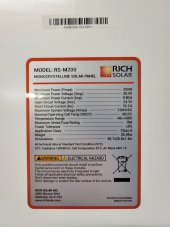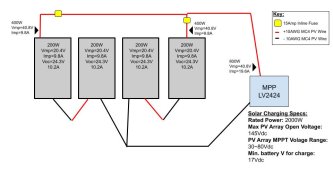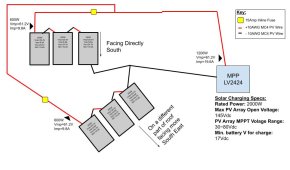Belzo
New Member
- Joined
- Nov 18, 2021
- Messages
- 33
I'm brand new to solar and have just setup my first really small setup. I have a MPPsolar PIP 2424 Inverter (off grid model, no feed to grid) with 4 Rich 200W panels wired in series going to the Inverter right now with a BigBatteries.com Mule 24v 3kwh battery. What I'm curious about is I have issues with shade on my 800w (max) panel array right now. I was considering adding another group of panels in a different spot on my roof to get morning and midday sun and I'm trying to wrap my head around maybe doing that group back there in series as well and then joining the two groups of panels into parallel. So one group would be in the current location (south) on one angle and direction and the other group would be elsewhere pointing a slightly different direction (south but maybe more south east) and angle. Would this array setup work in theory or is there a better way to do this? Thank you









